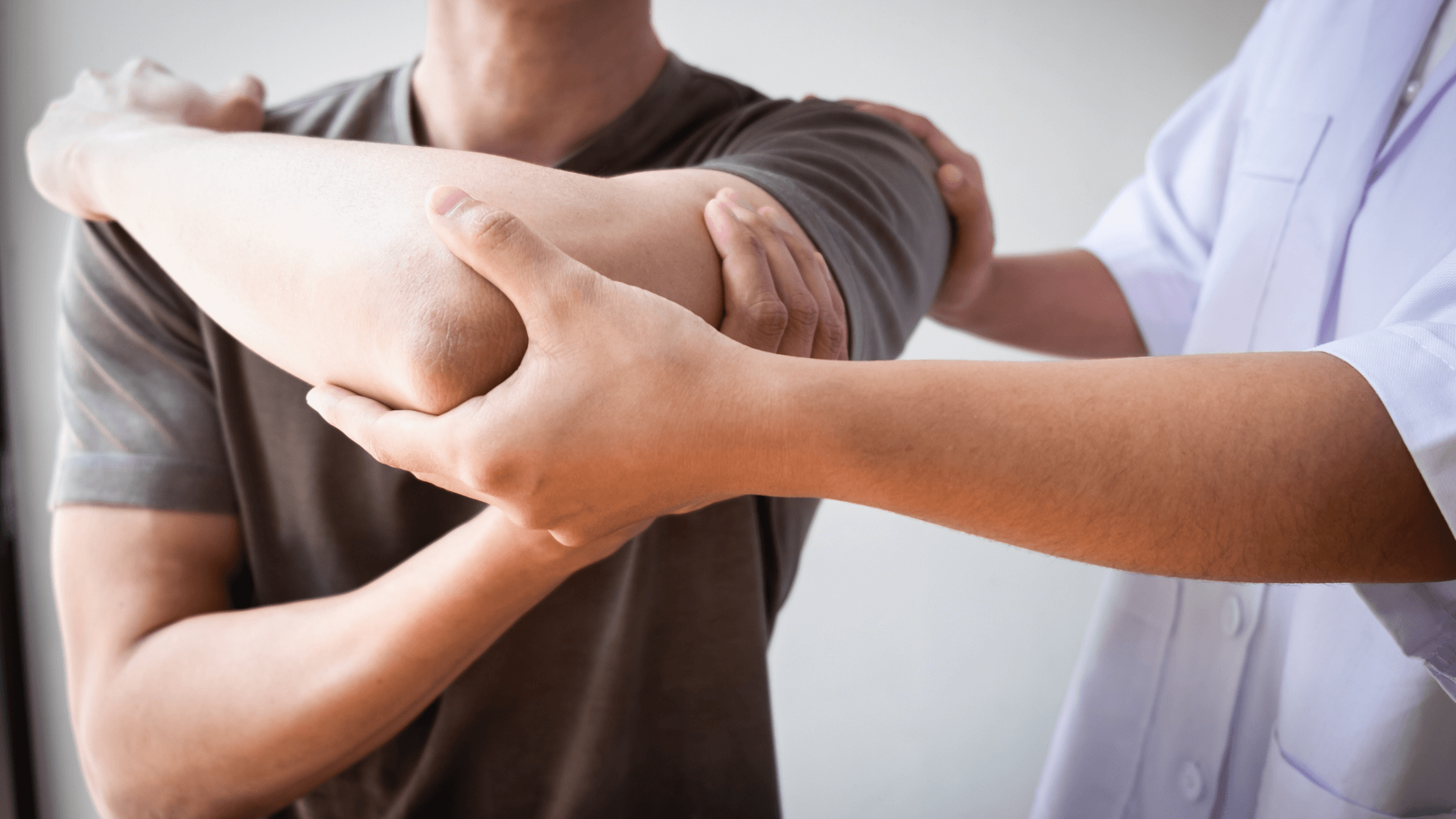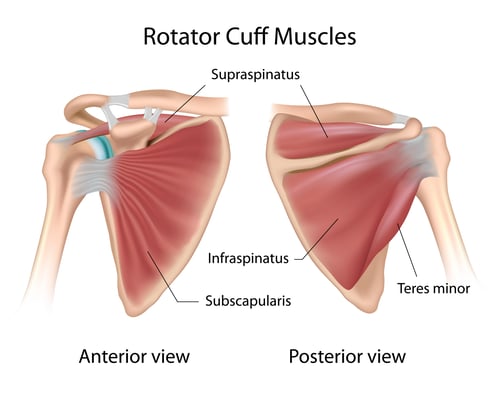Rotator Cuff Tears: Types, Causes, and Treatment

Licensed Physical Therapist, PT , DPT // Clinical Director of EW Motion Therapy Tuscaloosa
Rotator cuff tears are a common shoulder injury that affects many individuals, from athletes to office workers. While tears are common, this does not make dealing with one any easier. You likely cannot play your sport for a while if you are an athlete. if you are not an athlete, everyday activities like reaching a high shelf can be more difficult. So what does treatment look like? Do you need surgery?
While some types of rotator cuff tears require surgery, physical therapy might be an excellent treatment option whether you need surgery or not. Our physical therapy team at EW Motion Therapy creates individualized treatment plans for each patient to restore strength and maintain their range of motion. Even if you decide our services do not fit your needs, read on to explore the different types of rotator cuff tears, their causes, and how physical therapy can help in recovery.
What is the rotator cuff?
First, a quick anatomy lesson. Your rotator cuff is a group of muscles and tendons that surround and support your shoulder joints. It helps to stabilize the shoulder joint, control movement, and facilitate the range of motion. The rotator cuff is constructed by the tendons of 4 muscles, the supraspinatus, infraspinatus, teres minor, and subscapularis. These tendons form a “cuff” around the head of the humerus. These muscles stabilize the upper arm bone into the shallow socket of the scapula (the shoulder blade) and raise and move the arm in various directions. They work together to help stabilize the shoulder joint and allow for a wide range of motion.

What are the types of rotator cuff tears?
There are two types of rotator cuff tears: partial-thickness and full-thickness. A partial-thickness tear occurs when the tendon is only partially torn, while a full-thickness tear occurs when the tendon is completely severed. Partial-thickness tears are more common and can progress into full-thickness tears over time if left untreated.
Partial thickness tears are often caused by overuse of the shoulder joint or aging. Overuse can cause tiny tears in the rotator cuff, accumulating over time and eventually resulting in a partial tear. Aging can cause the tendons in the rotator cuff to weaken and become more susceptible to tearing.
There are also several subtypes of rotator cuff tears that can affect the severity and location of the tear. These subtypes include:
- Intrasubstance Tear - This type of tear occurs within the tendon itself, without involving the attachment to bone. This type of tear is more common in younger individuals and athletes.
- Bursal-Side Tear - This type of tear occurs on the side of the tendon that faces the bursa, a fluid-filled sac that cushions the tendon. This type of tear is often associated with impingement syndrome, where the rotator cuff tendon rubs against the acromion, a bony projection in the shoulder blade.
- Articular-Side Tear - This type of tear occurs on the side of the tendon that attaches to the bone. This type of tear is more common in older individuals and is often associated with degenerative changes in the shoulder joint.
- Full-Thickness Tear - This type of tear involves the complete severing of the tendon. Full-thickness tears can be further classified into small, medium, large, or massive tears, depending on the size of the tear and the degree of retraction of the torn tendon.
Rotator cuff tears can cause various symptoms, depending on the severity of the tear. The most common symptom is shoulder pain, ranging from a dull ache to a sharp, stabbing pain. The pain may be exacerbated by overhead movements, such as reaching or lifting. Other symptoms may include weakness in the shoulder, limited range of motion, and a clicking or popping sound in the shoulder joint.
What can cause rotator cuff tears?
Various factors, including age, overuse, and acute trauma, can cause rotator cuff tears, but there are some specific risk factors to note. These include age, especially over 60, occupations that require repetitive arm use, such as painters or carpenters, participating in sports such as baseball or tennis, and having a family history of rotator cuff tears due to genetic factors.
Full-thickness tears can be caused by acute trauma or chronic wear and tear. Acute trauma can occur from a fall or a direct blow to the shoulder, causing the tendon to sever completely. Regular wear and tear can be caused by repetitive overhead movements, such as throwing a baseball or lifting heavy weights. This type of tear is more common in athletes, especially those participating in sports requiring repetitive overhead movements.
To diagnose a rotator cuff tear, a healthcare provider may perform a physical examination and imaging tests such as X-rays, ultrasounds, or MRIs. In some cases, you might have an arthroscopy, a minimally invasive procedure where a tiny camera is inserted into the shoulder joint to visualize the tear.
How do you treat rotator cuff tears?
It's important to note that every patient is different, and you should decide on your treatment plan in consultation with a medical professional. In some cases, surgery may be the best option for achieving optimal outcomes, particularly for those with severe tears or other complications. However, physical therapy can be a valuable tool for managing rotator cuff injuries and may help some patients avoid or postpone surgery.
Treatment for a rotator cuff tear depends on the severity and location of the tear. For partial-thickness tears, treatment may include rest, physical therapy, and medication to manage pain and inflammation. The early phases of physical therapy treatment typically involve:
- Methods to reduce pain and inflammation, such as ice and compression
- Manual techniques, such as massage, promote blood flow and healing in the shoulder area
- Gentle motion in pain-free ranges to keep the shoulder joint as mobile as possible
Once pain is controlled, treatment typically transitions to restoring strength and functional mobility until the patient returns to normal activities.
For full-thickness tears, you may require surgery to repair the torn tendon. Rotator cuff surgery is typically outpatient, meaning the patient can go home the same day. The surgery usually takes about an hour and is performed under general anesthesia. The surgeon will make small incisions in the shoulder and use a tiny camera and special tools to repair damaged muscles or tendons. Sometimes, the surgeon may need a graft to support the repair.
There are different types of rotator cuff repairs, and the type of repair chosen will depend on the location and severity of the tear. Here are some common types of rotator cuff repairs:
- Open repair: This is a traditional surgical approach in which the surgeon makes a large incision in the shoulder to access the damaged tendon. The torn tendon is then reattached to the bone using sutures.
- Arthroscopic repair: This is a minimally invasive surgical approach in which the surgeon makes small incisions in the shoulder and uses a tiny camera and specialized tools to repair the damaged tendon. Arthroscopic repairs can offer several advantages over open repairs, including smaller incisions, less scarring, and a quicker recovery time.
- Mini-open repair: This hybrid approach combines elements of open and arthroscopic surgery. The surgeon makes a small incision in the shoulder and uses an arthroscope to assess the damage. Then, a small incision allows the surgeon to repair the tendon using sutures.
- Patch augmentation repair: This approach may be used for more giant tears or those that are difficult to repair using traditional techniques. In this procedure, a patch of biological material is attached to the tendon to provide additional support.
- Reverse total shoulder arthroplasty: This type of shoulder replacement surgery may be recommended for patients with severe rotator cuff tears who are not candidates for standard repairs. In this procedure, the surgeon replaces the damaged joint with an artificial joint.
The choice of repair technique will depend on several factors, including the size and location of the tear, the patient's age and overall health, and the surgeon's experience and preference. Your doctor will work with you to determine the best approach for your specific case.
After surgery, your doctor will likely recommend post-op physical therapy. Physical therapy is an essential component of post-operative rehabilitation after rotator cuff surgery. Physical therapy after surgery aims to help the patient regain range of motion, reduce pain and inflammation, and improve strength and function in the shoulder. Here are some ways that physical therapy can help with recovery after rotator cuff surgery:
- Pain management: Following rotator cuff surgery, it is common to experience pain and discomfort in the shoulder. A physical therapist can use various techniques, such as ice or heat therapy, massage, and electrical stimulation, to help manage pain and reduce inflammation.
- Range of motion exercises: The shoulder may be stiff and difficult to move after surgery. A physical therapist can design a series of gentle exercises to help improve the shoulder joint’s range of motion and flexibility.
- Strengthening exercises: As healing progresses, a physical therapist can work with the patient to design an exercise program to help strengthen the muscles surrounding the shoulder joint. This can help improve stability and function in the shoulder and reduce the risk of future injuries.
- Manual therapy: A physical therapist may use hands-on techniques, such as joint or soft tissue mobilization, to help improve range of motion and reduce stiffness in the shoulder joint.
- Functional training: A physical therapist can help the patient with functional training exercises that mimic daily activities, such as reaching, lifting, and carrying objects. These exercises can help patients regain confidence in everyday tasks without pain or limitations.
It's important to note that the specific course of physical therapy will depend on the type and extent of the surgical repair. A physical therapist will work with the patient to design a customized treatment plan to help achieve optimal outcomes and facilitate a safe and successful return to normal activities.
What is a typical recovery timeline for rotator cuff repairs?
The recovery timeline for rotator cuff surgery can vary depending on the severity of the injury and the type of surgery performed. In general, patients can expect to wear a sling for the first 4-6 weeks after surgery to help support the shoulder and allow it to heal. Patients should avoid activities that could put stress on the shoulder during this time. After 4-6 weeks, patients can begin a physical therapy program to help rebuild strength and mobility in the shoulder. Full recovery can take 4-6 months to a year or more.
Physical therapy is essential to the recovery process for rotator cuff surgery. A physical therapist will work with the patient to develop a customized program of exercises designed to rebuild strength and mobility in the shoulder. The physical therapist may use various techniques, including stretching, strengthening, and range of motion exercises, to help the patient recover. In addition, the physical therapist can guide proper posture and body mechanics to help prevent future injuries.
Rotator cuff tears can disrupt your daily activities, but if you seek the proper treatment and allow them to heal, you can return to everything you were doing. For partial tears, physical therapy can help restore strength and preserve the range of motion in your shoulder joint. We see many patients at EW Motion Therapy for shoulder rehabilitation, and we help them get back to their favorite activities with an individualized treatment plan. If you are curious about what else physical therapy could do for you, click the button below to download our answers to 20 frequently-asked physical therapy questions.


